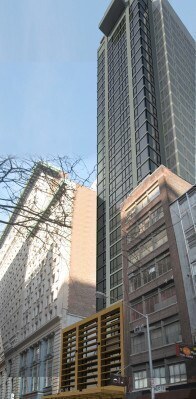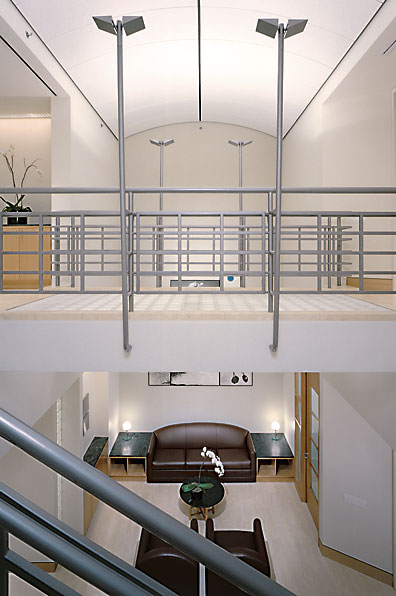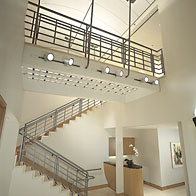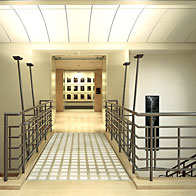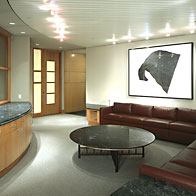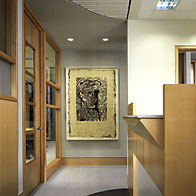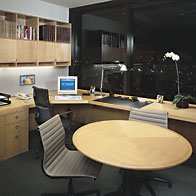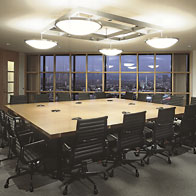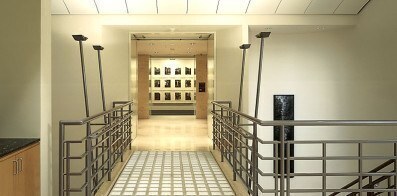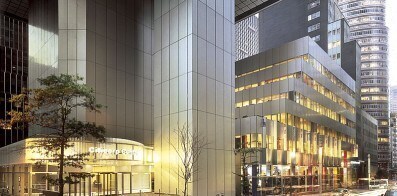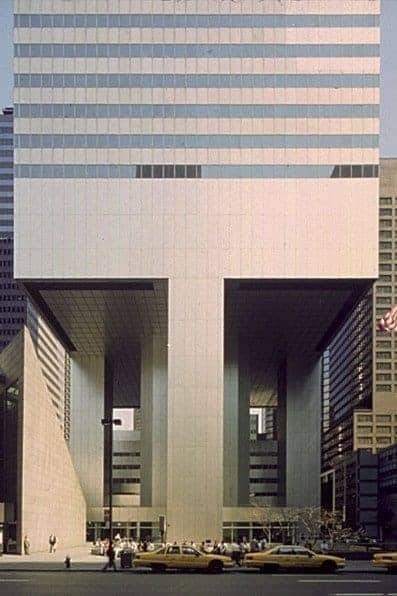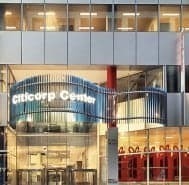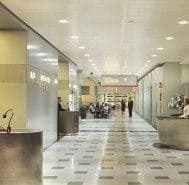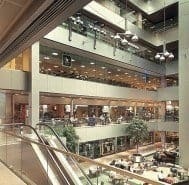The Capital Group, Inc.
Offices Los Angeles, CA The team-oriented approach of the Capital Group is reflected in the egalitarian, non-hierarchical environment of the company’s West Los Angeles offices. At the client’s request, there are no corner offices. Instead, a boardroom, conference rooms, library, and staff lounge occupy the corners of the two 16,000-square-foot floor plates, and individual offices and group workstations are arranged around the perimeter. Continue BackRather than the usual desk/credenza arrangement, each office has a 3’-6” conference table that encourages the discussions so characteristic of the company’s approach to investing, as well as a U-shaped counter providing a generous horizontal work surface for an evolving assortment of office machines.
Maple panels, translucent glass and transparent glass are layered in corridor walls, creating an instant reading of private and public spaces and allowing work stations arranged around the core to borrow light from the offices. The perimeter offices combine natural light with incandescent and fluorescent illumination from individually controlled luminaires. The HVAC system in each office can be individually manipulated. Special acoustical treatments, such as recessed doorways lined with perforated vinyl to reduce noise transmission, were required to accommodate the company’s “open door” philosophy.
Citicorp Center
Tower, Public Plaza and Atrium New York, NY The master plan for the landmark Citicorp Center in midtown Manhattan brings a new focus to the building’s image and revitalizes its public and retail spaces. The original entranceways to the Center were confusing, indicating the need for an unambiguous main entrance and improved site planning relationships. The outdoor plaza, for example, was formerly a sunken, unnavigable area composed primarily of steps. Continue BackCITICORP CENTER TOWER, PUBLIC PLAZA AND ATRIUM
New York, NY
The master plan for the landmark Citicorp Center in midtown Manhattan brings a new focus to the building’s image and revitalizes its public and retail spaces. The original entranceways to the Center were confusing, indicating the need for an unambiguous main entrance and improved site planning relationships. The outdoor plaza, for example, was formerly a sunken, unnavigable area composed primarily of steps.
By modifying it and allowing a substantial portion of it to exist at sidewalk level, the architects create a new “front door” to the Center from the Lexington Avenue and East 53rd Street corner. The design solution also enlarges the lobby space by deploying a circular form borrowed from the original geometry of the building. This allows the new plaza to be integrated with the existing lobby space and provides additional room for an open stair and a light well to the lower level, as well as clarified vertical circulation between lobbies.
A signage program was developed to articulate and emphasize the entrances and retail areas. Since the Citicorp Center is a modernist landmark of midtown Manhattan, great care was taken to assure that the revitalization
